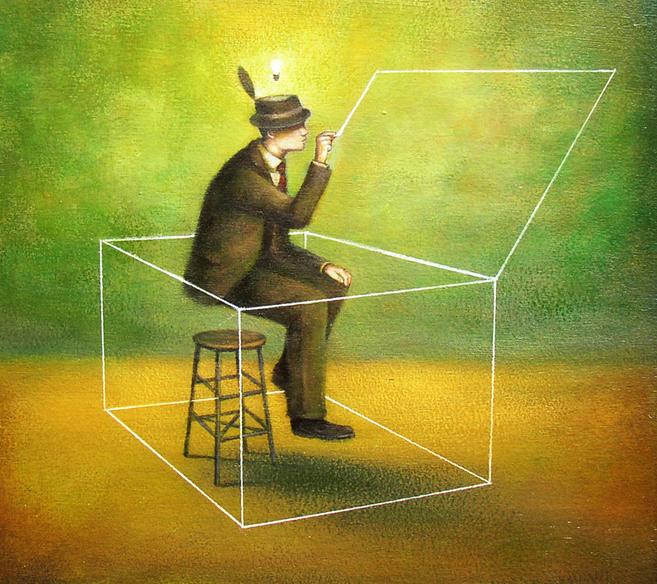
The Problem:
We are facing a couple of challenges but my team is just not ‘thinking out the box’. We seem to be regurgitating the same old ‘solutions’ and I whilst I know we need to be more creative in how we think, I am just not sure how best to help my team to do this?
The Solution:
‘Connecting the (random) dots’ is essentially the work that futurists do. It is about developing the capacity to see the implications and meaning of change. However, ‘connecting the dots’ assumes that we ‘see the dots’ in much the same way that ‘thinking out the box’ assumes that we are first ‘thinking in the box!’. The ‘dots’ we tend to see are the most obvious and very often this produces a linear type of thinking that fails to deliver any meaningful creativity. So, rather than finding links between the obvious, try connecting random objects as a means of unlocking creative thinking and ultimately solutions.
Leonardo Da Vinci wrote that he tried to ‘mix the unmixable’. Connecting random dots (items) is about ‘mixing the ‘unmixable’. Swedish author Fredrik Haren suggests that we need to be able to ‘see context where there is not one’. Breakthrough discoveries from Morse code to fire alarms have been made by observing seemingly unrelated events or objects. Doing this work might at first seem random and somewhat silly but it is a proven pathway to creative problem solving rather than following the well-worn traditional linear thinking type approach.
What are we talking about here? Well, think of random objects (an egg, a washing machine, a turnstile, a mobile/cell phone, a toothbrush, a toaster…anything and then find a link between that object and the problem you are trying to solve. Finding that pathway can open new ideas and perspectives and although it might seem a little ‘crazy’ (and helping your team to see the value of this might also require some persuasion!) it works! You simply have to try it…and keep trying it.
Notes:
- It might help to have actual pictures of the ‘random items’ on the desk and even a variety of representations of the same item.
- Go with the flow and don’t give in when it might seem that things are getting ‘crazy’ or ‘off-course’. Trust in the process and those present!
- It might help to make use of a whiteboard or flipchart as a visual graphic of things as they unfold. ‘Seeing’ some the connections helps the process. (Think of the pinboard connecting people, events, and bits of evidence that we often see in movies that are used by detectives in trying to solve a crime or mystery)

